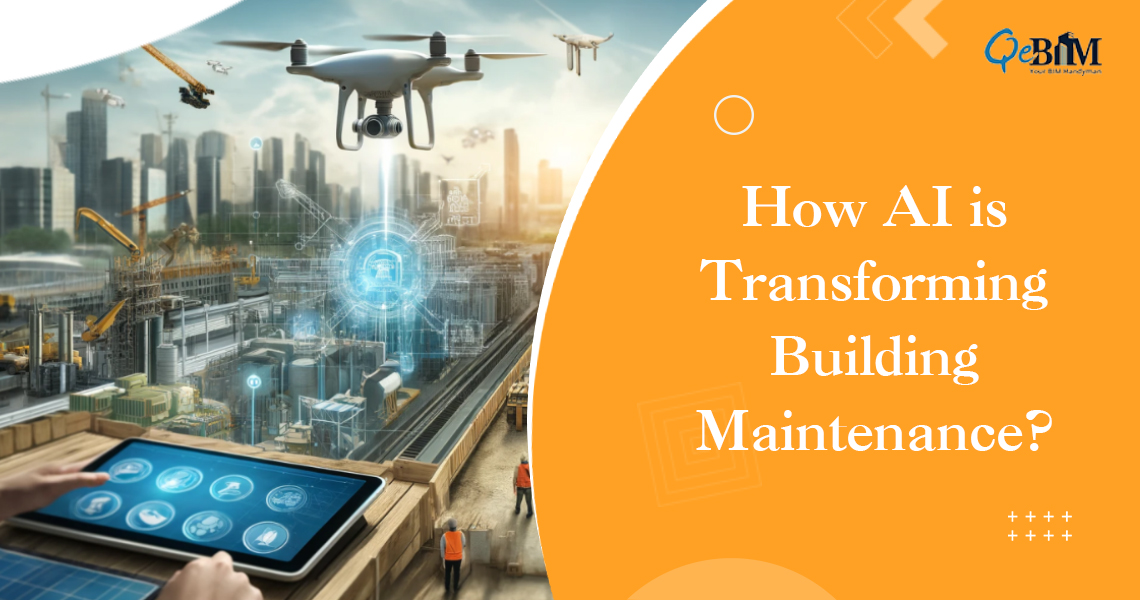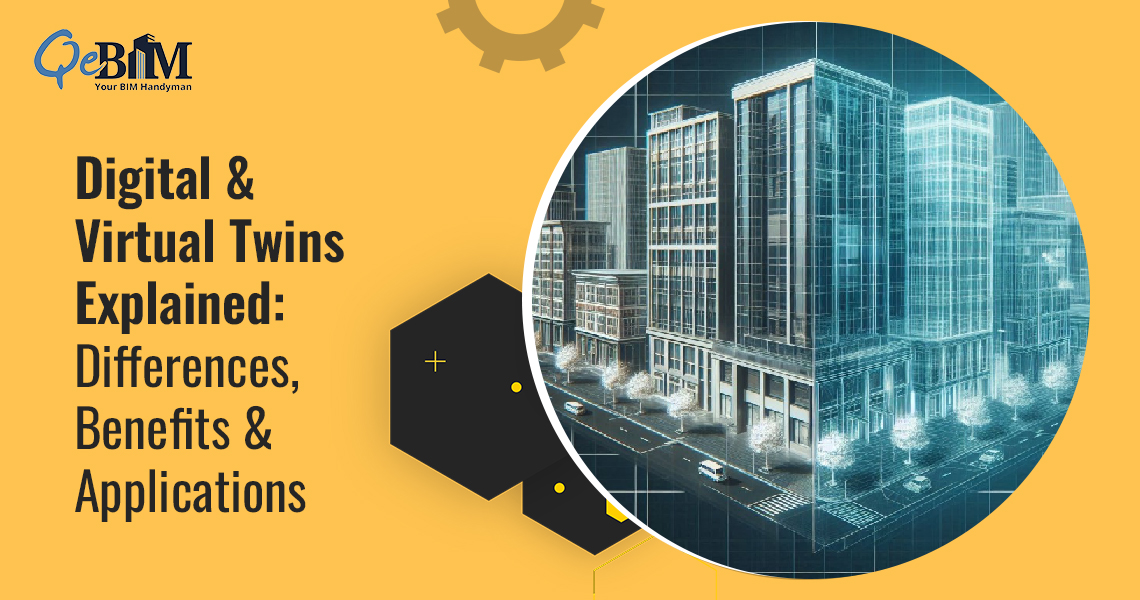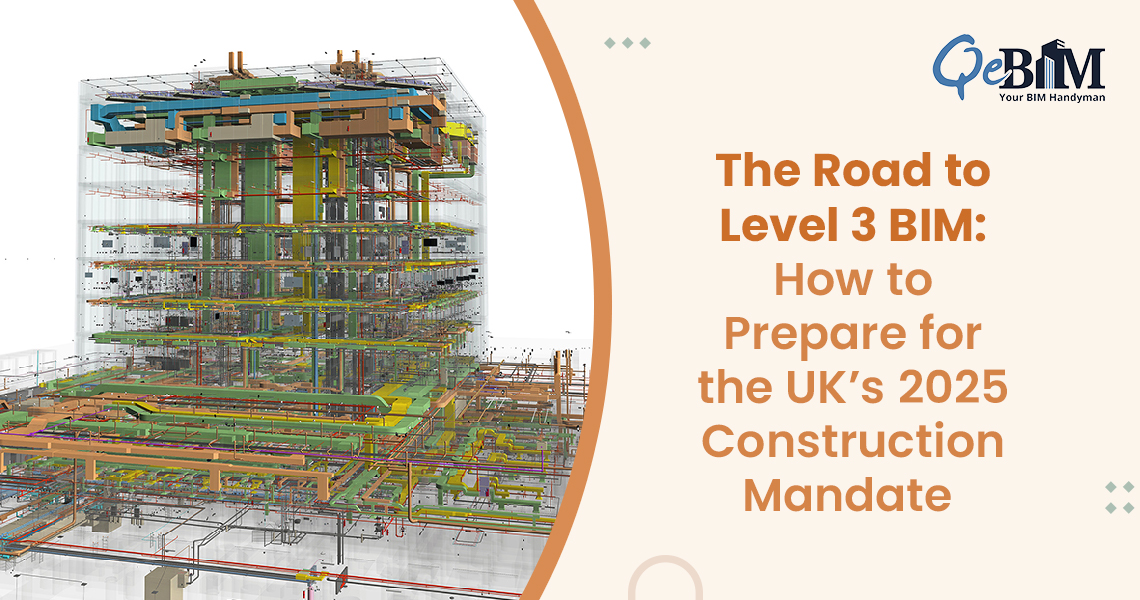Considering the fast-evolving digital landscape, artificial intelligence (AI) is truly transforming how many industries operate and AEC is no exception. AI has been used in AEC since a long go but it has now only caught the eye of many. AI is indeed useful in almost every aspect of building and facility management & maintenance also falls in to these categories.
AI indeed offers a wealth of possibilities to improve the efficiency, reduce the costs as well as enhance the occupant satisfaction. Whether managing a small office building or a sprawling commercial complex, AI along with top-notch BIM Services can revolutionize the building operations all through by providing the real-time insights and automating the time-consuming tasks.
Here’s a detailed look book at how AI is being utilized to improve building maintenance and management.
1) Predictive Maintenance
One of the key advantages of AI in building management is its ability to facilitate predictive maintenance. Traditionally, maintenance has been either reactive—responding to failures—or preventive—servicing the equipment based on a schedule. AI, however, can predict when the equipment is likely to fail thereby allowing the facility managers to address issues before they become critical.
AI can detect patterns and anomalies that indicate impending problems by collecting and analysing data from the sensors placed in the HVAC systems, elevators, lighting systems and more. This data-driven strategy reduces unexpected downtime, prolongs equipment lifespan and ultimately cut ups both on time as well as costs.
2) Energy Management and Optimization
Energy consumption is one of the largest operational costs in the building management. AI-driven energy management systems optimize the energy usage by learning the patterns of building occupants, analysing the weather forecasts as well as adjusting the heating, cooling and lighting systems accordingly.
AI can automatically reduce energy use during off-peak hours and intelligently distribute the energy based on their real-time demand.
By optimizing energy usage, AI not only cut downs the utility costs but also makes buildings more eco-friendly by lowering their carbon footprint.
3) Smart HVAC Systems
AI-enabled HVAC systems can make the real-time adjustments to improve air quality, temperature and humidity levels. By learning occupant behaviour such as when rooms are typically empty or when the building is busiest, AI can adjust settings to save energy while maintaining optimal comfort levels.
In large office buildings or hospitals, this can lead to significant cost savings and improve indoor air quality which is increasingly important for employee’s health and productivity.
4) Automated Cleaning and Waste Management
AI-driven robots and automation systems can be deployed to handle routine tasks like cleaning and waste management. For example, robotic cleaners equipped with AI can map out the building and determine the most efficient routes for cleaning. Similarly, AI can monitor waste bins to ensure they are emptied only when necessary, reducing unnecessary waste removal trips.
These technologies reduce labor costs and ensure elevated standards of cleanliness and hygiene, which is crucial in environments like healthcare facilities and educational institutions.
5) Security and Surveillance
AI-powered surveillance systems can enhance the building security by continuously monitoring the cameras detecting unusual activity and alerting security personnel in real-time. The traditional security systems generally rely on the human oversight but AI can process video feeds 24/7 without any fatigue thereby ensuring comprehensive coverage.
Moreover, the facial recognition as well as AI algorithms can manage access control by identifying authorized personnel and detecting potential security breaches.
AI-based security systems are not only faster and more efficient but also scalable making them ideal for larger or more complex buildings where manual monitoring may be impractical.
6) Space Utilization and Optimization
In commercial real estate, optimizing the use of space can lead to considerable savings. AI-driven space management systems track how the spaces are used over time thereby allowing the facility managers to make informed decisions about layout, leasing and renovation. For instance, AI can help determine whether the meeting rooms are underutilized or if certain areas are overcrowded enabling for better space allocation.
This data can also inform future building designs ensuring that new projects are tailored to the actual needs of occupants ultimately promoting the efficiency and flexibility in building use.
7) Tenant and Occupant Satisfaction
AI can improve the overall occupant experience by integrating with smart building technologies. For example, AI-based systems can provide personalized climate controls, lighting as well as the security features that cater to the individual preferences. Also, the occupants can interact with the AI-powered virtual assistants to report maintenance issues, reserve spaces or request services thereby offering a seamless and user-friendly experience.
8) Asset Tracking and Management
Tracking the lifecycle of assets in large buildings can be complex. AI can simplify this by integrating with IoT devices and sensors that track assets in real-time. With this, the facility managers can get an accurate, real-time view of the status, location along with the condition of equipment such as elevators, HVAC units and lighting systems. AI can also recommend the best time to replace or service these assets thereby reducing the risk of costly breakdowns.
This level of asset management not only reduces downtime but also ensures that facilities remain fully operational without overspending on premature replacements.
9) Automated Reporting and Documentation
AI can also automate reporting and documentation tasks in building maintenance and management. The facility managers spend significant time generating reports, logging maintenance activities and ensuring compliance with regulations. AI can handle these tasks, generating reports based on real-time data and alerting managers when specific compliance checks are needed.
This allows facility managers to focus on more critical tasks and improves the accuracy by eliminating human error from manual reporting processes.
10) Data-Driven Decision-Making with AI Analytics
AI analytics transforms raw building data such as energy use, maintenance records and occupancy patterns into actionable insights. By evaluating this data in real time, AI helps facility managers make smarter, informed decisions.
Conclusion
AI is no longer just a concept of the future but a tangible reality with immense potential in building maintenance and management. By leveraging AI technologies along with the important tool like BIM for Facility Managers, the overall operational costs can be reduced. This also has other benefits like amplified occupant satisfaction as well as improved sustainability ratio of the buildings.
With AI trending in the market and penetrating in almost all industries, its role in building management will only expand thereby offering even more innovative solutions for maintaining efficient, smart and secured facilities.
Adopting AI is not just about automating the processes; it’s about embracing a more intelligent and proactive approach to building management, the one that is capable of meeting the demands of modern buildings and their occupants.





